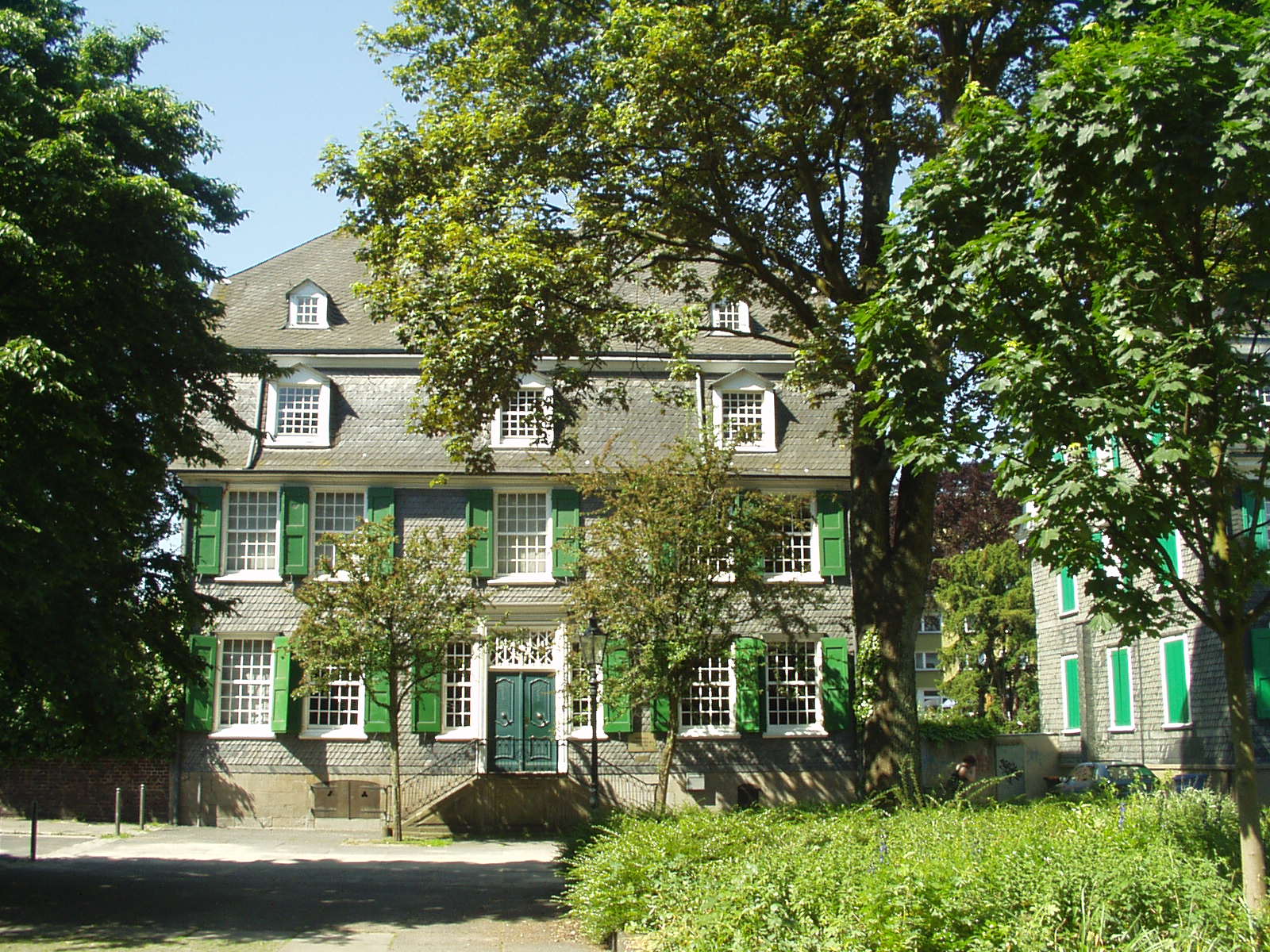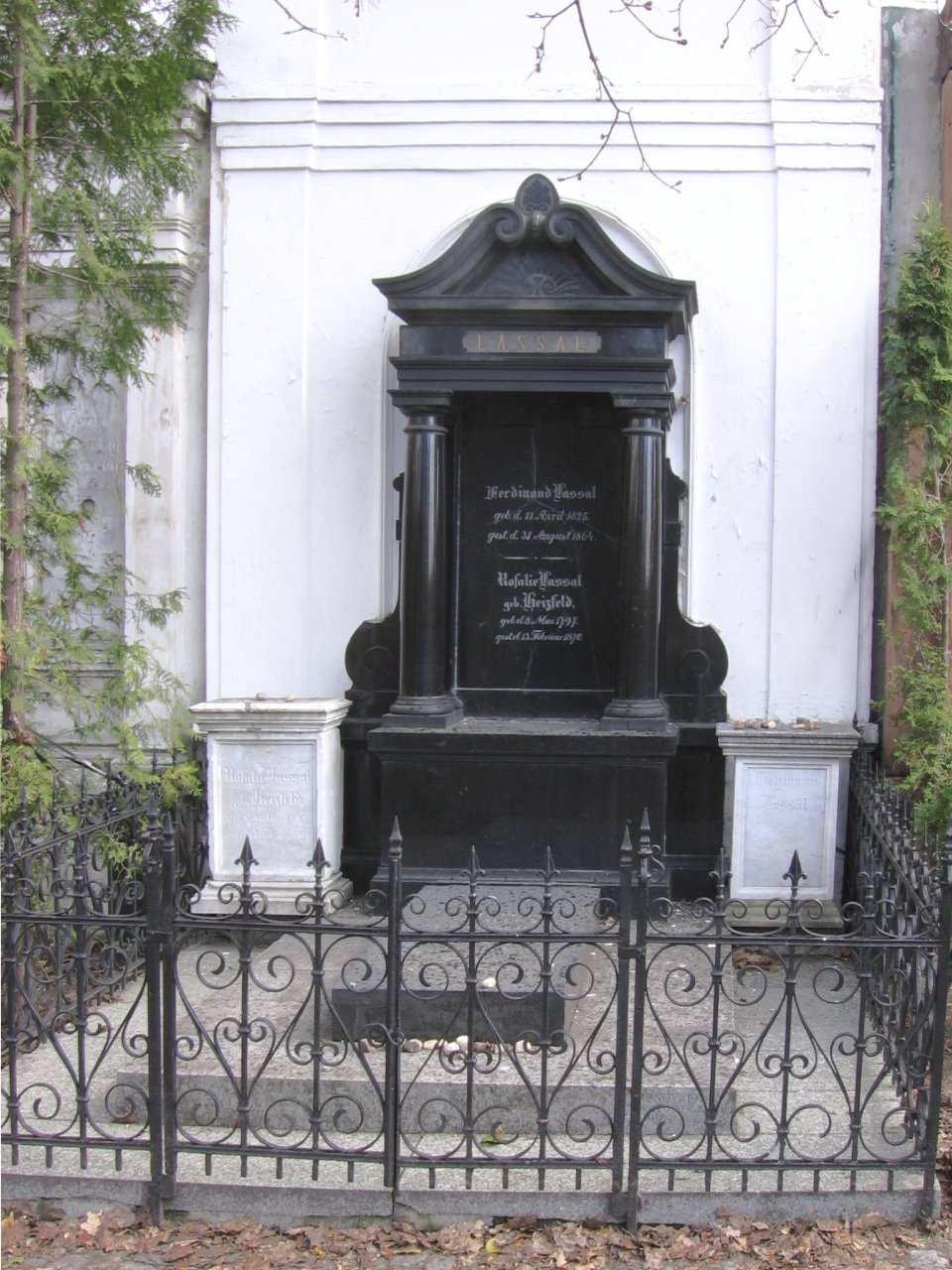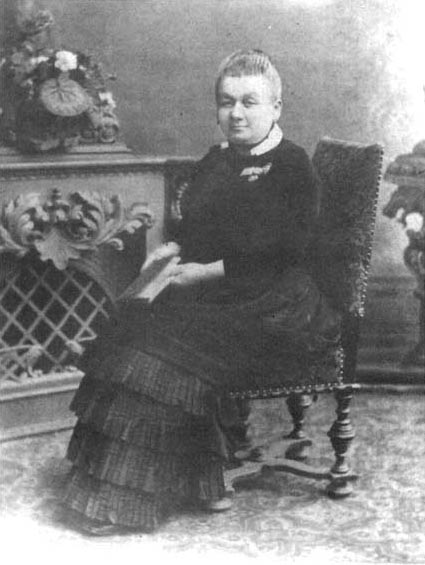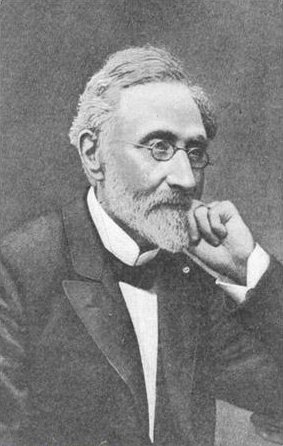|
Old Jewish Cemetery, Wrocław
The Old Jewish Cemetery ( pl, Stary Cmentarz Żydowski we Wrocławiu) is a historic necropolis-museum situated on 37/39 Ślężna Street, in the southern part of Wrocław (formerly Breslau), Poland. Opened in 1856, the cemetery's eclectic layout features many architectural forms and styles on a monumental scale. The current shape of the cemetery evolved mostly throughout the 19th century, during the times of the German Empire. The first burial took place in what was then the village of Gabitz (Gajowice), just outside city limits. The cemetery area was then expanded twice. In 1943, the burial ceremonies were abandoned and the necropolis was leased for five years to a gardening center. During World War II, the cemetery became a fierce battleground, the marks of which are still visible on many tombstones. It was inscribed into the register of city monuments in 1975. Architecture Most of the cemetery objects were built in second half of the 19th century. They imitate various ar ... [...More Info...] [...Related Items...] OR: [Wikipedia] [Google] [Baidu] |
Wrocław
Wrocław (; german: Breslau, or . ; Silesian German: ''Brassel'') is a city in southwestern Poland and the largest city in the historical region of Silesia. It lies on the banks of the River Oder in the Silesian Lowlands of Central Europe, roughly from the Baltic Sea to the north and from the Sudeten Mountains to the south. , the official population of Wrocław is 672,929, with a total of 1.25 million residing in the metropolitan area, making it the third largest city in Poland. Wrocław is the historical capital of Silesia and Lower Silesia. Today, it is the capital of the Lower Silesian Voivodeship. The history of the city dates back over a thousand years; at various times, it has been part of the Kingdom of Poland, the Kingdom of Bohemia, the Kingdom of Hungary, the Habsburg monarchy of Austria, the Kingdom of Prussia and Germany. Wrocław became part of Poland again in 1945 as part of the Recovered Territories, the result of extensive border changes and expulsions ... [...More Info...] [...Related Items...] OR: [Wikipedia] [Google] [Baidu] |
Leopold Auerbach
Leopold Auerbach (27 April 1828 – 30 September 1897) was a German anatomist and neuropathologist born in Breslau. Education and career Auerbach studied medicine at the Universities of Breslau, Berlin and the Leipzig. He became a physician in 1849, obtained his habilitation in 1863. From 1872 he was an associate professor of neuropathology at the University of Breslau. Discoveries Auerbach was among the first physicians to diagnose the nervous system using histological staining methods. He published a number of papers on neuropathological problems and muscle-related disorders. He is credited with the discovery of ''Plexus myentericus Auerbachi'', or Auerbach's plexus, a layer of ganglion cells that provide control of movements of the gastro-intestinal tract, also known as the "myenteric plexus". "Friedreich–Auerbach disease" is named after Auerbach and pathologist Nikolaus Friedreich (1825-1882). It is a rare disease characterized by hemi-hypertrophy of the facial features ... [...More Info...] [...Related Items...] OR: [Wikipedia] [Google] [Baidu] |
Cemetery Vandalism And Desecration
A cemetery, burial ground, gravesite or graveyard is a place where the remains of dead people are buried or otherwise interred. The word ''cemetery'' (from Greek , "sleeping place") implies that the land is specifically designated as a burial ground and originally applied to the Roman catacombs. The term ''graveyard'' is often used interchangeably with cemetery, but a graveyard primarily refers to a burial ground within a churchyard. The intact or cremated remains of people may be interred in a grave, commonly referred to as burial, or in a tomb, an "above-ground grave" (resembling a sarcophagus), a mausoleum, columbarium, niche, or other edifice. In Western cultures, funeral ceremonies are often observed in cemeteries. These ceremonies or rites of passage differ according to cultural practices and religious beliefs. Modern cemeteries often include crematoria, and some grounds previously used for both, continue as crematoria as a principal use long after the interment areas ... [...More Info...] [...Related Items...] OR: [Wikipedia] [Google] [Baidu] |
Buildings And Structures In Wrocław
A building, or edifice, is an enclosed structure with a roof and walls standing more or less permanently in one place, such as a house or factory (although there's also portable buildings). Buildings come in a variety of sizes, shapes, and functions, and have been adapted throughout history for a wide number of factors, from building materials available, to weather conditions, land prices, ground conditions, specific uses, prestige, and aesthetic reasons. To better understand the term ''building'' compare the list of nonbuilding structures. Buildings serve several societal needs – primarily as shelter from weather, security, living space, privacy, to store belongings, and to comfortably live and work. A building as a shelter represents a physical division of the human habitat (a place of comfort and safety) and the ''outside'' (a place that at times may be harsh and harmful). Ever since the first cave paintings, buildings have also become objects or canvasses of much artistic ... [...More Info...] [...Related Items...] OR: [Wikipedia] [Google] [Baidu] |
Antisemitism In Poland
Racism in Poland in the 20th and 21st centuries has been the subject of significant inquiry. While Ethnic minorities in Poland, ethnic minorities made up a more significant proportion of the country's population from the founding of the History of Poland, Polish state through the Second Polish Republic, 21st century government statistics have shown 94% or more of the population self-reports as ethnically Polish.Główny Urząd StatystycznyWyniki Narodowego Spisu Powszechnego Ludności i Mieszkań 2011, Warszawa 2012, pp. 105-106 nationalities tables 1 or 2 Starting with the 16th century, many Jews lived in Poland, so much that it was called the History of the Jews in Poland#Center of the Jewish world: 1505–72, center of the Jewish world. Occasional pogroms, such as in Krakow in 1494 and Warsaw in 1527, p ... [...More Info...] [...Related Items...] OR: [Wikipedia] [Google] [Baidu] |
21st-century Attacks On Synagogues And Jewish Communal Organizations
The 1st century was the century spanning AD 1 (Roman numerals, I) through AD 100 (Roman numerals, C) according to the Julian calendar. It is often written as the or to distinguish it from the 1st century BC (or BCE) which preceded it. The 1st century is considered part of the Classical era, epoch, or History by period, historical period. The 1st century also saw the Christianity in the 1st century, appearance of Christianity. During this period, Europe, North Africa and the Near East fell under increasing domination by the Roman Empire, which continued expanding, most notably conquering Britain under the emperor Claudius (AD 43). The reforms introduced by Augustus during his long reign stabilized the empire after the turmoil of the previous century's civil wars. Later in the century the Julio-Claudian dynasty, which had been founded by Augustus, came to an end with the suicide of Nero in AD 68. There followed the famous Year of Four Emperors, a brief period of civil war and inst ... [...More Info...] [...Related Items...] OR: [Wikipedia] [Google] [Baidu] |
Ernst Steinitz
Ernst Steinitz (13 June 1871 – 29 September 1928) was a German mathematician. Biography Steinitz was born in Laurahütte (Siemianowice Śląskie), Silesia, Germany (now in Poland), the son of Sigismund Steinitz, a Jewish coal merchant, and his wife Auguste Cohen; he had two brothers. He studied at the University of Breslau and the University of Berlin, receiving his Ph.D. from Breslau in 1894. Subsequently, he took positions at Charlottenburg (now the Technical University of Berlin), Breslau, and the University of Kiel, Germany, where he died in 1928. Steinitz married Martha Steinitz and had one son. Mathematical works Steinitz's 1894 thesis was on the subject of projective configurations; it contained the result that any abstract description of an incidence structure of three lines per point and three points per line could be realized as a configuration of straight lines in the Euclidean plane with the possible exception of one of the lines. His thesis also contains the p ... [...More Info...] [...Related Items...] OR: [Wikipedia] [Google] [Baidu] |
Karl Marx
Karl Heinrich Marx (; 5 May 1818 – 14 March 1883) was a German philosopher, economist, historian, sociologist, political theorist, journalist, critic of political economy, and socialist revolutionary. His best-known titles are the 1848 pamphlet ''The Communist Manifesto'' and the four-volume (1867–1883). Marx's political and philosophical thought had enormous influence on subsequent intellectual, economic, and political history. His name has been used as an adjective, a noun, and a school of social theory. Born in Trier, Germany, Marx studied law and philosophy at the universities of Bonn and Berlin. He married German theatre critic and political activist Jenny von Westphalen in 1843. Due to his political publications, Marx became stateless and lived in exile with his wife and children in London for decades, where he continued to develop his thought in collaboration with German philosopher Friedrich Engels and publish his writings, researching in the British Mus ... [...More Info...] [...Related Items...] OR: [Wikipedia] [Google] [Baidu] |
Ferdinand Lassalle
Ferdinand Lassalle (; 11 April 1825 – 31 August 1864) was a Prussian-German jurist, philosopher, socialist and political activist best remembered as the initiator of the social democratic movement in Germany. "Lassalle was the first man in Germany, the first in Europe, who succeeded in organising a party of socialist action", or, as Rosa Luxemburg put it: "Lassalle managed to wrestle from history in two years of flaming agitation what needed many decades to come about." As agitator he coined the terms night-watchman state and iron law of wages. Biography Early life Lassalle was born Ferdinand Johann Gottlieb Lassal on 11 April 1825 in Breslau, Silesia (now Wrocław, Poland). His father Heyman Lassal was a Jewish silk merchant and intended his son for a business career, sending him to the commercial school at Leipzig. However, Lassalle soon transferred to university, studying first in the University of Breslau and later at the University of Berlin. There, Lassalle studied ... [...More Info...] [...Related Items...] OR: [Wikipedia] [Google] [Baidu] |
Friederike Kempner
Friederike Kempner (25 June 1828 – 23 February 1904) was a German-Jewish poet. The daughter of a well-off family from Kępno (german: Kempen), Kempner was born in Opatów, then part of the Prussian Grand Duchy of Posen (today Poland). In 1844, her father purchased a manor (''Rittergut'') in Droschkau, Silesia, where she and her siblings spent a sheltered youth. By her mother, she received education in the French language, literature, and the Jewish Enlightenment. In 1864, she was able to establish her own residence at a family estate called ''Friederikenhof'' (Gierczyce) near Reichthal (Rychtal), where she wrote many of her works. By her niece Doris Davidsohn, née Kempner, she was the great-aunt of Jakob van Hoddis. The death of both her parents in 1868 had a lasting effect on Kempner's work. Early in life, she developed an interest in general humanitarian questions, especially in hygiene, as well as in reforms of the prison system and the abolition of solitary confinement. S ... [...More Info...] [...Related Items...] OR: [Wikipedia] [Google] [Baidu] |
Heinrich Graetz
Heinrich Graetz (; 31 October 1817 – 7 September 1891) was amongst the first historians to write a comprehensive history of the Jewish people from a Jewish perspective. Born Tzvi Hirsch Graetz to a butcher family in Xions (now Książ Wielkopolski), Grand Duchy of Posen, in Prussia (now in Poland), he attended Breslau University, but since Jews at that time were barred from receiving Ph.D.s there, he obtained his doctorate from the University of Jena.''Encyclopaedia Judaica'' (2007, 2nd ed.) entry on "Graetz, Heinrich," by Shmuel Ettinger and Marcus Pyka After 1845 he was principal of the school of the [...More Info...] [...Related Items...] OR: [Wikipedia] [Google] [Baidu] |









